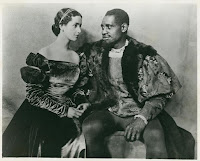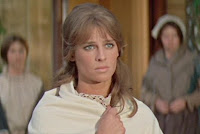The publication of the latest short fiction collection from John O’Hara, The Horse Knows the Way, in November 1964 should have been cause for unalloyed delight for author and publisher alike. Its 28 tales, like his other work, not only garnered unusually high sales for short fiction but cemented his status as a master of the form.
Instead, O’Hara inadvertently provided more fodder for
his detractors. In a foreword, describing his need to get down on paper all he
knew about how the people of his town lived, he concluded, “I have work to do,
and I am afraid not to do it.”
More than a few critics, however—led by those in the highly
influential New York Review of Books and The New York Times Book
Review—transposed the key words at the end to read, “not afraid to do it.”
Just the kind of braggadocio you’d expect from O’Hara,
they noted.
Predictably, that observation only increased the fury of a man who perceived slights everywhere he turned. It also reinforced why he requested that his publisher, Random House, officially release his books on Thanksgiving: Because, unlike reviewers in the more high-profile Sunday Times Book Review, he would get a respectful hearing from the paper's daily critic, Charles Poore (who thought highly enough of his work and character that he delivered the eulogy after O'Hara died in 1970).
Worse, like so much else
associated with this gifted but touchy writer, the mangled quotation originated from anything but
a close reading of O'Hara's work.
Consider, for instance, Adrian Mitchell’s dismissal of
the volume in The New York Times Book Review: “It’s not the flat,
monochrome characters but the author’s flat, monochrome vision of their world
which is so often discouraging.”
But this largely forgotten British novelist, poet, and critic missed what other authors (including E.L. Doctorow, whose left-wing politics was diametrically opposed to that of the increasingly conservative O’Hara’s) have picked up on: that, while O’Hara’s prose might be prismatic, his presentation is anything but.
With abrupt, often stunning endings, his stories
send readers scurrying back through these works, trying to pick up on the clues
they missed earlier.
It was true that O’Hara could be his own worst enemy: openly
craving the Nobel Prize, for instance, or an honorary degree from Yale
University, an institution of higher learning he’d been unable to attend
because of the financial complications following the death of his father. Asked
why the school had never awarded him that degree, the president at the time,
Kingman Brewster, responded simply, “Because he asked.”
But at his best—and the stories in The Horse Knows
the Way are consistently good—they fulfill his intention of trying to tell
the truth about his time.
Roughly speaking, his short stories occur in three
locales, the places where he had spent most of his time: New York, Hollywood,
and Gibbsville, PA (the fictional stand-in for his hometown, Pottsville). Like
much of his other Hollywood fiction, an example from The Horse Knows the Way,
“The Answer Depends,” spotlights the kind of actors who populate much of
the fare on Turner Classic Movies.
But my favorite stories from the book are set in Gibbsville, whose physical and emotional geography he knew with bone-deep understanding. These are the stories to seek out in this volume: "At the Window," "The Hardware Man," "The Victim," "The House on the Corner," "Aunt Fran," and "All Tied Up."
“For a while, at least,” O’Hara warned his loyal
readers, “this will be my last book of short stories.” It wasn’t so much that
he had descended into sloth, however, as that he decided to focus his energy on
other projects.
One, the novel The Lockwood Concern, which
appeared the following year, at least earned some critical plaudits as among
his better entries in the long form in the last part of his life.
The other activity, a syndicated column for Newsday,
lasted only a year, and did nothing but swell his reputation for bumptiousness
and bellyaching about his lack of respect.
Fortunately, he returned to the short story genre in
1966 with Waiting for Winter, whose title strongly hinted at his
increasing concern for aging and mortality.
The Horse Knows the Way appeared midway through a decade of flabbergasting productivity in the short-story form for O'Hara: from 1960 to 1968, seven collections of 137 tales, bringing his career total to more than 400.
Other writers (like my favorite, F. Scott Fitzgerald) impress with their shimmering style, but they never took the measure of so many people from so many walks of life as O'Hara. These late stories, like his earlier ones, rely heavily on dialogue.
But, because O'Hara feared that younger readers would be more likely to miss the resonances of his tales set decades earlier, they are often more ruminating, even melancholy, as in this passage from "The Answer Depends":
"I don't try to follow the plot lines of Ned Revere's films. In a few minutes after one of his pictures has begun to roll, I am in a daze of recollection, of remembering Ned as a gay companion: irresponsible, Quixotic, romantic, attractive to men as well as to women, and with no illusions then as to his stature as an artist."
Surveying where life has left them, the narrator, a retired actor named "Bobby," concludes: "I don't know who is better off: me, at my TV, with memories as fresh as the news in the morning paper, or Ned, scornful of those pleasant and profitable days, and with the lingering bitter taste of that one success on Broadway."




















